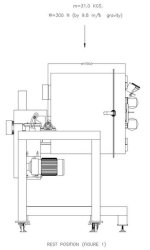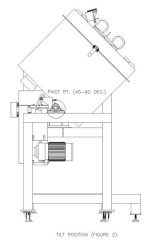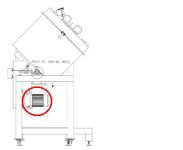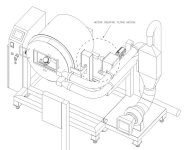From a sizing perspective, you should start with Cobonweb's point about finding the center of gravity.
Good luck. I have never seen a mechanical engineer provide a center of gravity. I have had people ask me how to determine the COG for Nascar racers and they spend millions on those cars.
But don't discount Peter's point. Unless the goal is to just hold the box at an angle without moving it, torque requirements due to acceleration need to be factored in.
Actually, you must address my point about the holding torque for all angles first.
If you try auto tuning this system it will fail unless the auto tuning can be done so that there is no load due to gravity. Otherwise the auto tuning system will look at the motion and the control signal to make that motion and assume that all of that control signal is required to accelerate or decelerate the load. Auto tuners don't understand changing loads due to gravity and orientation.
Ideally, one would find the control signal required to hold the load and subtract that from the control signal used in the auto tuning. This is the control signal required to accelerate and decelerate the load.
Most auto tuning systems are crude and are marketing tools just to say they have it instead of really being useful tools but I don't think there are any autotuners around yet that take into account the changing load due to gravity,,,,,,,,yet.
It's nice to have to available tools, isn't it?
Keith
Yes, and the knowledge to know their limitations and make them better.













